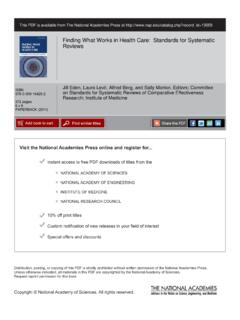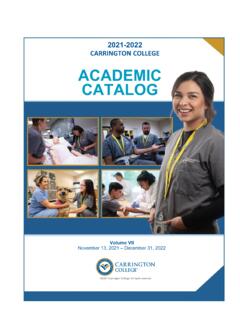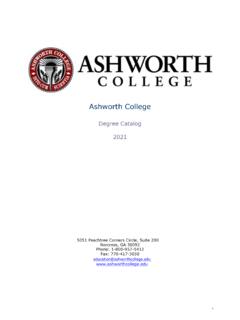Transcription of The Growth of Incarceration in the United States ...
1 Visit the National Academies Press online and register access to free PDF downloads of titles from theDistribution, posting, or copying of this PDF is strictly prohibited without written permission of the National Academies Press. Unless otherwise indicated, all materials in this PDF are copyrighted by the National Academy of Sciences. Request reprint permission for this bookCopyright National Academy of Sciences. All rights off print titlesCustom notification of new releases in your field of interestSpecial offers and discountsNATIONAL ACADEMY OF SCIENCESNATIONAL ACADEMY OF ENGINEERINGINSTITUTE OF MEDICINENATIONAL RESEARCH COUNCILThis PDF is available from The National Academies Press at pages6 x 9 PAPERBACK (2014)The Growth of Incarceration in the United States : Exploring Causes and Consequences Jeremy Travis and Bruce Western, Editors; Committee on Causes and Consequences of High Rates of Incarceration ; Committee on Law and Justice; Division of Behavioral and Social Sciences and Education; National Research Council Copyright National Academy of Sciences.
2 All rights Growth of Incarceration in the United States : Exploring Causes and ConsequencesCommittee on Causes and Consequences of High Rates of IncarcerationJeremy Travis, Bruce Western, and Steve Redburn, EditorsCommittee on Law and JusticeDivision of Behavioral and Social Sciences and EducationThe Growth of Incarceration in the United StatesExploring Causes and ConsequencesCopyright National Academy of Sciences. All rights Growth of Incarceration in the United States : Exploring Causes and ConsequencesTHE NATIONAL ACADEMIES PRESS 500 Fifth Street, NW Washington, DC 20001 NOTICE: The project that is the subject of this report was approved by the Govern-ing Board of the National Research Council, whose members are drawn from the councils of the National Academy of Sciences, the National Academy of Engineer-ing, and the Institute of Medicine. The members of the committee responsible for the report were chosen for their special competences and with regard for appropri-ate study was supported by Award No.
3 11-99472-000-USP from the MacArthur Foundation and Award No. 201I-DJ-BX-2029 from the Department of Jus-tice. Any opinions, findings, conclusions, or recommendations expressed in this publication are those of the author(s) and do not necessarily reflect the views of the organizations or agencies that provided support for the of Congress Cataloging-in-Publication Data The Growth of Incarceration in the United States : exploring causes and consequences / Committee on Causes and Consequences of High Rates of Incarceration , Jeremy Travis and Bruce Western, editors, Committee on Law and Justice, Division of Behavioral and Social Sciences and Education. National Research Council of the National Academies. pages cm Includes bibliographical references. ISBN 978-0-309-29801-8 (pbk.) ISBN 0-309-29801-6 (pbk.) 1. Imprisonment United States . 2. Prisoners United States --Social conditions. 3. Criminal justice, Administration of United States .
4 I. Travis, Jeremy. II. Western, Bruce, 1964- III. National Research Council ( ). Committee on Law and Justice. 2014 365 .973 dc23 2014007860 Additional copies of this report are available from the National Academies Press, 500 Fifth Street, NW, Keck 360, Washington, DC 20001; (800) 624-6242 or (202) 334-3313; 2014 by the National Academy of Sciences. All rights in the United States of AmericaSuggested citation: National Research Council. (2014). The Growth of Incar-ceration in the United States : Exploring Causes and Consequences. Committee on Causes and Consequences of High Rates of Incarceration , J. Travis, B. Western, and S. Redburn, Editors. Committee on Law and Justice, Division of Behavioral and Social Sciences and Education. Washington, DC: The National Academies National Academy of Sciences. All rights Growth of Incarceration in the United States : Exploring Causes and ConsequencesThe National Academy of Sciences is a private, nonprofit, self-perpetuating society of distinguished scholars engaged in scientific and engineering research, dedicated to the furtherance of science and technology and to their use for the general welfare.
5 Upon the authority of the charter granted to it by the Congress in 1863, the Acad-emy has a mandate that requires it to advise the federal government on scientific and technical matters. Dr. Ralph J. Cicerone is president of the National Academy of National Academy of Engineering was established in 1964, under the charter of the National Academy of Sciences, as a parallel organization of outstanding en-gineers. It is autonomous in its administration and in the selection of its members, sharing with the National Academy of Sciences the responsibility for advising the federal government. The National Academy of Engineering also sponsors engineer-ing programs aimed at meeting national needs, encourages education and research, and recognizes the superior achievements of engineers. Dr. C. D. Mote, Jr., is presi-dent of the National Academy of Institute of Medicine was established in 1970 by the National Academy of Sciences to secure the services of eminent members of appropriate professions in the examination of policy matters pertaining to the health of the public.
6 The Insti-tute acts under the responsibility given to the National Academy of Sciences by its congressional charter to be an adviser to the federal government and, upon its own initiative, to identify issues of medical care, research, and education. Dr. Harvey V. Fineberg is president of the Institute of National Research Council was organized by the National Academy of Sci-ences in 1916 to associate the broad community of science and technology with the Academy s purposes of furthering knowledge and advising the federal government. Functioning in accordance with general policies determined by the Academy, the Council has become the principal operating agency of both the National Academy of Sciences and the National Academy of Engineering in providing services to the government, the public, and the scientific and engineering communities. The Coun-cil is administered jointly by both Academies and the Institute of Medicine. Dr. Ralph J.
7 Cicerone and Dr. C. D. Mote, Jr., are chair and vice chair, respectively, of the National Research National Academy of Sciences. All rights Growth of Incarceration in the United States : Exploring Causes and ConsequencesCopyright National Academy of Sciences. All rights Growth of Incarceration in the United States : Exploring Causes and ConsequencesvCOMMITTEE ON CAUSES AND CONSEQUENCES OF HIGH RATES OF INCARCERATIONJEREMY TRAVIS (Chair), John Jay College of Criminal Justice, City University of New York BRUCE WESTERN (Vice Chair), Department of Sociology and Kennedy School of Government, Harvard University JEFFREY A. BEARD, california Department of Corrections and Rehabilitation*ROBERT D. CRUTCHFIELD, Department of Sociology, University of WashingtonTONY FABELO, Justice Center, Council of State Governments, Lexington, KY MARIE GOTTSCHALK, Department of Political Science, University of PennsylvaniaCRAIG W. HANEY, Department of Psychology and Program in Legal Studies, University of california , Santa Cruz RICARDO H.
8 HINOJOSA, District Court, southern District of Texas GLENN C. LOURY, Department of Economics, Brown UniversitySARA S. MCLANAHAN, Center for Research on Child Wellbeing, Princeton UniversityLAWRENCE M. MEAD, Department of Politics, New York UniversityKHALIL GIBRAN MUHAMMAD, Schomburg Center for Research in Black Culture, New York City Public Library DANIEL S. NAGIN, Heinz College, Carnegie Mellon UniversityDEVAH PAGER, Department of Sociology and Kennedy School of Government, Harvard University ANNE MORRISON PIEHL, Department of Economics and Program in Criminal Justice, Rutgers UniversityJOSIAH D. RICH, Department of Medicine and Epidemiology, Brown University, and Center for Prisoner Health and Human Rights, The Miriam Hospital, Providence, RIROBERT J. SAMPSON, Department of Sociology, Harvard UniversityHEATHER ANN THOMPSON, Department of History, Temple University MICHAEL TONRY, School of Law, University of MinnesotaAVELARDO VALDEZ, School of Social Work, University of southern CaliforniaSTEVE REDBURN, Study DirectorMALAY MAJMUNDAR, Senior Program OfficerJULIE ANNE SCHUCK, Senior Program AssociateBARBARA BOYD, Administrative Coordinator*Resigned fall National Academy of Sciences.
9 All rights Growth of Incarceration in the United States : Exploring Causes and ConsequencesCopyright National Academy of Sciences. All rights Growth of Incarceration in the United States : Exploring Causes and ConsequencesviiCOMMITTEE ON LAW AND JUSTICE 2013-2014 JEREMY TRAVIS (Chair), John Jay College of Criminal Justice, New York RUTH D. PETERSON (Vice Chair), Department of Sociology, Ohio State UniversityCARL C. BELL, Community Mental Health Council, Inc. JOHN J. DONOHUE, III, Stanford Law School, Stanford University MINDY FULLILOVE, New York State Psychiatric Institute and Mailman School of Public Health, Columbia UniversityMARK KLEIMAN, Department of Public Policy, University of california , Los Angeles GARY LAFREE, Department of Criminology and Criminal Justice, University of Maryland, College ParkJANET L. LAURITSEN, Department of Criminology and Criminal Justice, University of MissouriGLENN LOURY, Department of Economics, Brown UniversityJAMES P. LYNCH, Department of Criminology and Criminal Justice, University of Maryland, College ParkCHARLES F.
10 MANSKI, Department of Economics, Northwestern UniversityDANIEL S. NAGIN, Heinz College, Carnegie Mellon UniversityANNE MORRISON PIEHL, Department of Economics and Program in Criminal Justice, Rutgers UniversityDANIEL B. PRIETO, Cybersecurity and Technology, Department of DefenseSUSAN B. SORENSON, School of Social Policy & Practice, University of PennsylvaniaDAVID WEISBURD, Center for Evidence Based Crime Policy, George Mason UniversityCATHY SPATZ WIDOM, Psychology Department, John Jay College of Criminal Justice, City University of New YorkPAUL K. WORMELI, Integrated Justice Information Systems, Ashburn, VAARLENE LEE, DirectorCopyright National Academy of Sciences. All rights Growth of Incarceration in the United States : Exploring Causes and ConsequencesCopyright National Academy of Sciences. All rights Growth of Incarceration in the United States : Exploring Causes and ConsequencesixPrefaceThe Growth of Incarceration rates in the United States for more than four decades has spawned commentary and a growing body of sci-entific knowledge about its causes and the consequences for those imprisoned, their families and communities, and society.









